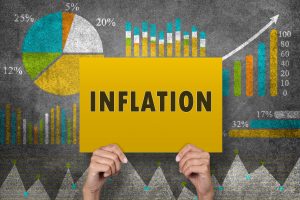Inflation Is Back, Part 9: Two Sentences Say It All
The comments below are an edited and abridged synopsis of an article by John Rubino
Tight labor markets are redressing some of the imbalance between employers and employees, while pulling formerly marginalized people into the mainstream economy.
 The trick is to maintain this kind of an environment once it’s achieved. But labour shortages lead to higher wages, which are a form of inflation. The monetary authorities have no trouble ignoring epic increases in stock, bond and real estate prices because those aren’t included in the cost of living. So the rich have gotten richer while at the end, as the pool of available workers dries up, workers start to get a (slightly) bigger piece of the pie. Which then spooks the government into raising interest rates to choke off the inflation.
The trick is to maintain this kind of an environment once it’s achieved. But labour shortages lead to higher wages, which are a form of inflation. The monetary authorities have no trouble ignoring epic increases in stock, bond and real estate prices because those aren’t included in the cost of living. So the rich have gotten richer while at the end, as the pool of available workers dries up, workers start to get a (slightly) bigger piece of the pie. Which then spooks the government into raising interest rates to choke off the inflation.
So that’s what’s coming. And the sense in Washington is that higher interest rates and tighter credit terms are now necessary.
It’s like this because of debt. The more we borrow, the bigger the financial bubbles and the deeper the downturns, and the longer each recovery has to run before wages start to rise. So the rich enjoy long increases in property values and stocks, while their workers get a couple of decent years at best before things fall apart.
The solution for ever-rising debt is sound money that limits the ability of government to engineer credit bubbles. That’s also coming, as the dysfunction of the current system becomes apparent to a critical mass of people.
Get ready for terms like ‘currency reset’ and ‘gold hits new record’ to start generating headlines.
